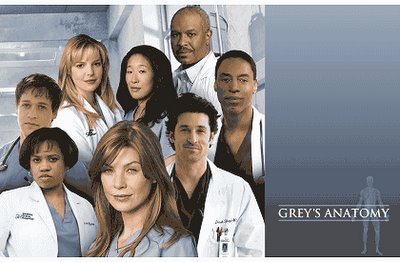
Grey’s Anatomy: Why this critically acclaimed medical tour de force is the best thing on television
During the first stimulating episode of Grey’s Anatomy I suddenly remembered the wonders surgeons had performed on me, once upon an Easter weekend. My ambulance was the first of a swarm of emergencies queuing to get into the military hospital (I was in the Air Force at the time), and I remember, as they wheeled me through the corridors, my knee a volcano gushing black and thick red ooze, a doctor saying: “Here they come…” When I emerged, barely an hour later, my knee was perfectly patched up with deep mattress stitching. The kneecap that I thought had disappeared, a great bananas skin that had been ripped from my knee, had been carefully put back together by the surgeons on duty that day. It’s a day not easily forgotten, and that’s the blood and guts of Grey’s Anatomy – the restoration of life, including that of the inner human being.
So there is that incredible drama, to plenty of fresh, listenable soundtracks, in Grey’s Anatomy. It presents the almost pristine but not sterile environment of the Seattle Grace Hospital, and the people who are sent there, damaged, wrecked and mutilated by the great forces of Life going on outside the hospital’s walls. Inside, therefore, the interns (Meredith Grey – Ellen Pompeo – is one) have to be ready to deal with the broken bodies that turn up around the clock. To be up to this task, dealing with nature’s sometimes brutal selection process (for who lives and who doesn’t), a surgeon has to be extremely tough. Shifts for the interns are 48 hours long (one presumes to provide that vital real time continuity for critical patients recently admitted and receiving treatment).
It also presents the sometimes rainy world outside of the hospital. Times spent near the great waters of Seattle, learning about love, and learning about life.
Grey’s Anatomy works because it is not merely intelligent story-telling and problem solving (in the medical drama genre), it provides a far more youthful and human view of the surgeon’s world, than other medical dramas have to date, such as say: ER. The story lines are of exceptional quality, the casting is brilliant, even cinematography is bright and filled with vitality. Grey’s Anatomy is imbued with inspiring excitement, romance and presents extraordinary individuals not merely as admirable and bright, but also flawed and fallible. This two-sides-to-the-coin dichotomy is presented with charming accuracy at the end of the very first episode where Meredith, having quickly established herself as one of the best of her group, visits her mother, whose legend she now attempts to emulate. Her mother is in an institution; the once brilliant woman vaguely recalls that she was once a doctor too, but her mind has atrophied to the extent that she doesn’t know her own daughter.
There is a brilliant exchange between mother and daughter, where Meredith’s mother asks her daughter: “Are you the doctor?”
Meredith responds: “No, I’m your daughter. But I’m also a doctor.” Her daughter is not anguished but sensitive and warm to her mother’s (and potentially her own future) condition.
In that simple but powerful scene we can easily intuit the host of reasons why Meredith has chosen to become a doctor. The camera switches meaningfully to her mother’s hand, nervously wringing her old metal watch around her wrist as her mind reaches into the void for memories of a meaningful life. Meredith is now leading this life that is slipping away from her mother.
In Grey’s Anatomy there is a charming blend of nice-to-look-at characters, characters with personality and something else: cohesion between a variety people of working towards a common cause; and their sense of charity and compassion on a human scale.
Why Grey’s Anatomy works at the end of the day is simply this: it is a story not bogged down by life, and life’s intricacies, but set free by them. Grey’s Anatomy elucidates the hope and magic of the human spirit. In it we see the potential of just one woman to do good, and it is in her great potential that we discover the tremendous meaning and value imbedded in each life, including our own.
2 comments:
Hi, Nick - I've been trying to post this comment on your March 10, 2005 entry, but Blogger is being otherwise .... I'm related to Tim Ziehl, and am trying to contact him, preferably by phone. We had email contact some time ago, but then he got busy again. Would you be able to put us in touch, please? I'm doing some ZIEHL research and would like to get a major lot done during the next two weeks (date now: 26 Jan. 2007) Thank you!
Tim owns an architecture company in Stellenbosch. I'm not there. I saw him a few months ago, gave him my card, but he wasn't in contact. If you know anyone in Stellies, chances are they'll know how to reach him. I don't have his contact details, but I know someone who might. Email me at nicolasvdl@yahoo.com and I'll get back to you with the relevant info.
Post a Comment